Dreaming of a home where your fluffy white Maltese and a graceful feline companion live in perfect harmony? You’re not alone. Many potential and current Maltese owners wonder if this idyllic scene is possible or just a recipe for chaos. The good news is that with the right approach, a Maltese and a cat can become the best of friends.
This guide will walk you through everything you need to know, from understanding their temperaments to a step-by-step plan for a safe and successful introduction.
The Big Question: Are Maltese and Cats a Good Match?
When considering bringing a cat into a home with a Maltese, or vice versa, the first thing to evaluate is the inherent nature of both animals. While every dog and cat is an individual, breed temperaments offer a solid starting point for predicting their potential compatibility.
Understanding the Maltese Temperament
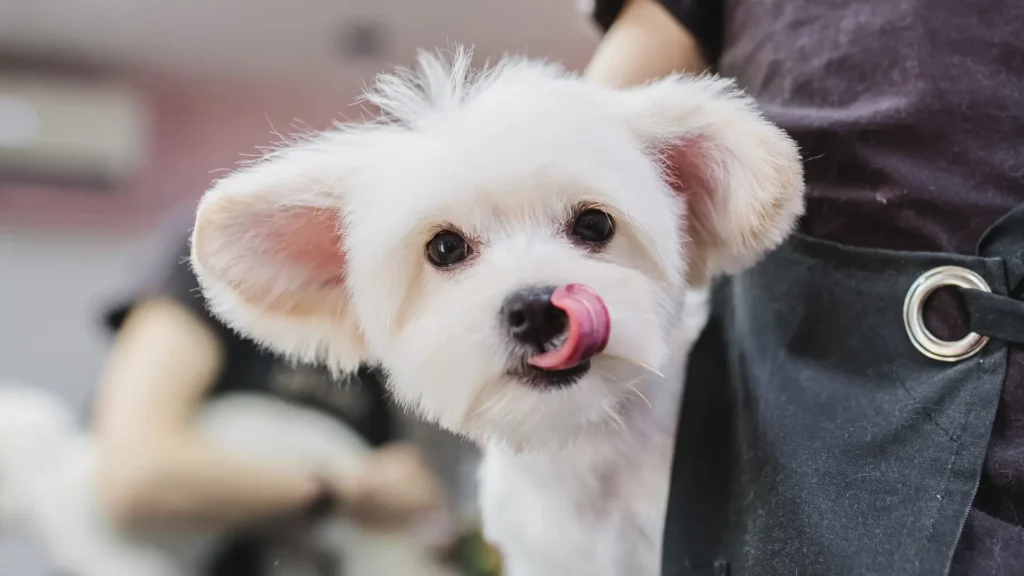
Maltese dogs were bred for one primary purpose: companionship. They are not hunters, herders, or guard dogs. Their entire history revolves around being gentle, affectionate lap dogs. This is a huge advantage when it comes to living with other animals, especially cats.
- Low Prey Drive: Unlike many terrier breeds or sighthounds that have a strong instinct to chase small, furry creatures, the Maltese generally has a very low prey drive. This means they are less likely to view a cat as something to hunt, which immediately lowers the risk of dangerous altercations.
- Small Size: A full-grown Maltese typically weighs under 7 pounds. This puts them on a much more even footing with the average house cat. A cat is less likely to feel intimidated by a dog of a similar size and is more capable of defending itself if needed, which can paradoxically lead to a more balanced relationship.
- Playful but Gentle: Maltese are known for their playful, puppy-like antics well into adulthood. Their style of play is usually not overly rough or boisterous, making it more palatable for a feline housemate who might be put off by a larger, more rambunctious dog.
- Eager to Please: These dogs are intelligent and thrive on pleasing their owners. This trainability is a huge asset during the introduction process, as they can be taught boundaries and commands like “leave it” or “gentle.”
Considering the Cat’s Perspective
Cats, on the other hand, are often more territorial and independent. Their reaction to a new dog will be heavily influenced by their personality and past experiences.
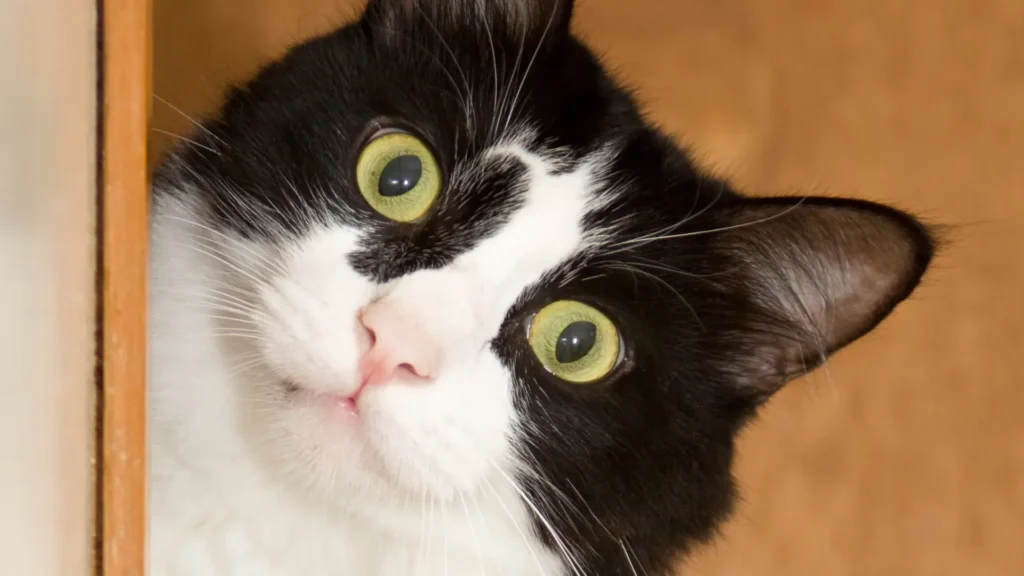
A confident, curious cat who has had positive or neutral experiences with dogs in the past is an ideal candidate. A timid, fearful cat, or one who has been chased or attacked by a dog before, will require significantly more time and patience.
The key takeaway is that the Maltese breed’s general temperament makes them one of the better canine candidates for cohabitating with cats. Their gentle nature and small size reduce many of the initial barriers. However, success is never guaranteed by breed alone; individual personality and a carefully managed introduction are the most critical components.
Key Factors That Influence Success
Before you even begin the introduction process, it’s important to assess the specific factors at play in your situation. Considering these variables will help you set realistic expectations and tailor your approach for the best possible outcome.
Age: Puppy and Kitten vs. Adults
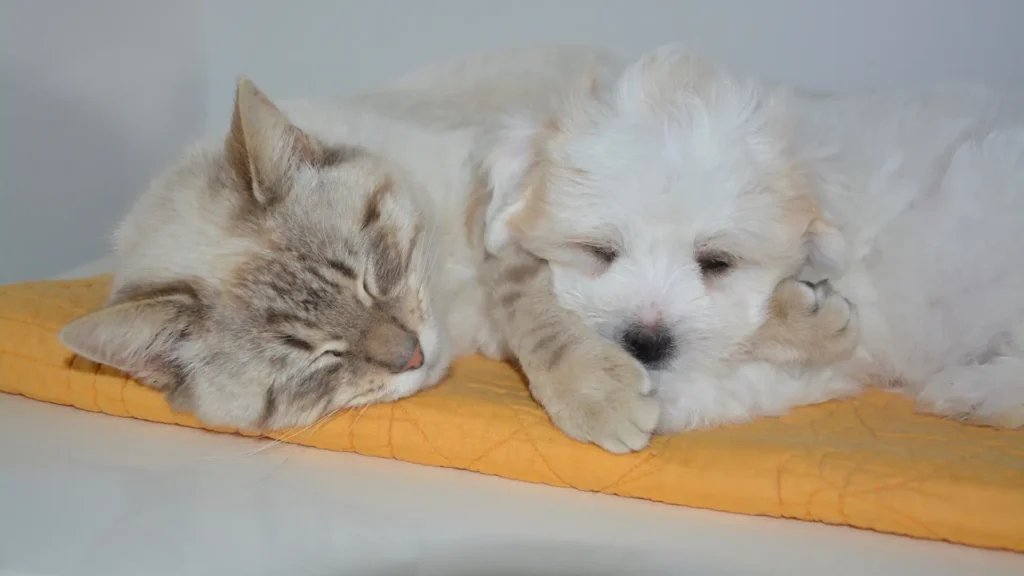
The age of both pets when they are introduced is perhaps the single most significant factor.
- The Ideal Scenario (Puppy & Kitten): Introducing a Maltese puppy to a kitten is the easiest path to success. Neither has established strong territorial claims, and they are both in a crucial socialization period. They are more likely to accept each other as part of the normal household environment and grow up together as companions, learning each other’s boundaries and communication styles from a young age.
- Maltese Puppy & Adult Cat: This is also a very manageable scenario. An adult cat will quickly establish the rules of the house. The puppy, being naturally submissive and still learning, will likely learn to respect the cat’s space and authority. The primary challenge here is ensuring the puppy’s playful energy doesn’t overwhelm or annoy the cat, so careful supervision is a must.
- Adult Maltese & Kitten: This can be a bit trickier. An adult Maltese is already set in its ways and may be less tolerant of a kitten’s boundless, pestering energy. The kitten is also very vulnerable. It’s crucial to ensure the Maltese is gentle and to protect the kitten from any accidental or intentional harm.
- The Most Challenging Scenario (Adult & Adult): Introducing two adult animals requires the most patience and diligence. Both pets have established personalities, histories, and territorial instincts. You don’t know their past experiences with other species. This doesn’t mean it’s impossible, but you must be committed to a very slow and gradual introduction process.
Personality and Past Experiences
Forget breed stereotypes for a moment and look at the individuals. Do you have a calm, laid-back Maltese, or a more anxious, yappy one? Is the cat bold and curious, or shy and easily startled? If you’re adopting, try to get as much information as possible from the shelter or previous owner about the pet’s history with other animals. An animal that has successfully lived with the other species before has a much higher chance of doing so again.
Your Role as the Calm Leader
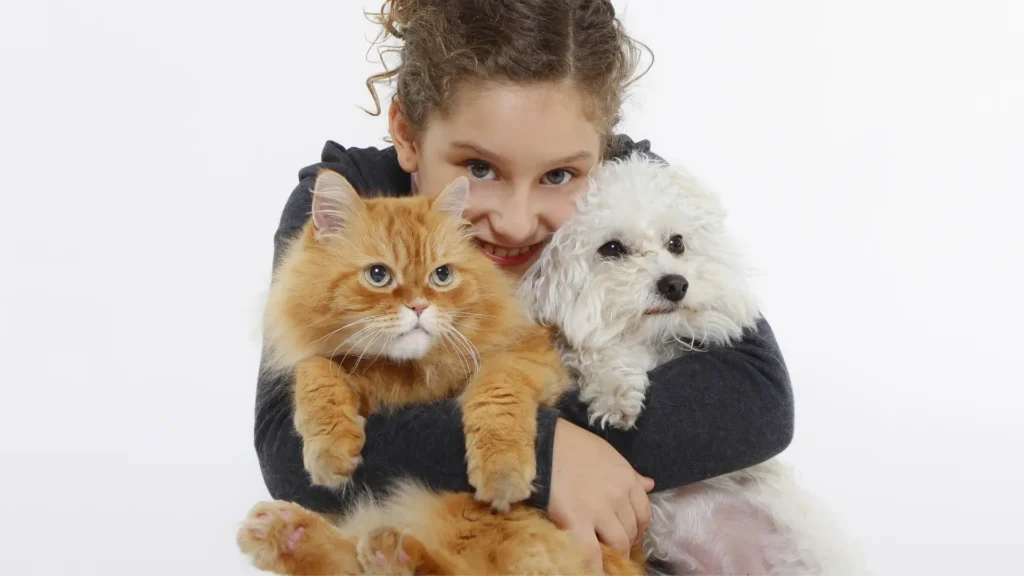
Your pets will take their cues from you. If you are anxious, nervous, or stressed during their interactions, they will pick up on that energy and become stressed themselves. It is your job to be a calm, confident leader who projects an aura of safety and normalcy. Your patience and commitment to managing the process are non-negotiable for success.
The Step-by-Step Guide to a Safe Introduction
Never rush this process. The golden rule is to go as slowly as the most hesitant pet needs. It can take weeks, or even months, to achieve a peaceful coexistence. Pushing them too fast can create a negative association that is very difficult to undo. Patience is your greatest tool.
Step 1: Prepare Your Home (Before the Meeting)
Preparation is everything. Before the new pet even comes home, or before you begin introductions between resident pets, set up your environment for success.
- Create Separate Sanctuaries: Each pet needs their own “safe zone” where the other is not allowed to go. For the new animal (let’s assume it’s a cat), this could be a spare bedroom. This room should have everything the cat needs: food, water, a litter box, a comfortable bed, and toys. The Maltese should not have access to this room. This gives the cat a place to decompress and feel secure.
- Scent Swapping: Animals learn about each other primarily through smell. Take a blanket or towel that your Maltese has slept on and place it in the cat’s room. Take a blanket from the cat’s bed and let your Maltese sniff it. Do this for several days. You can also gently rub a cloth on one pet’s cheeks and place it near the other’s food bowl. This allows them to get used to each other’s scent in a non-threatening way.
- Install Baby Gates: Baby gates are invaluable tools. They can be used to block off the cat’s safe room while still allowing the pets to see and smell each other later in the process. Consider getting a tall gate or even stacking two if you have an athletic cat or a bouncy dog.
Step 2: No-Contact Introduction (Through a Door)
For the first few days, the only interaction should be the scent-swapping and their presence on opposite sides of a closed door. The goal here is to build positive associations.
Try feeding your Maltese and your cat on opposite sides of the closed door to the cat’s sanctuary. Start with the bowls several feet away from the door. If they both eat calmly, you can gradually move the bowls closer to the door with each meal. This teaches them that good things (food!) happen when the other animal is nearby.
Step 3: Visual Contact (Behind a Barrier)
Once both pets are calm with the feeding-at-the-door routine, it’s time for them to see each other. Replace the closed door with a baby gate or screen door. Or, you can crack the door open just enough for them to see but not touch.
- Keep the Maltese on a leash initially to prevent them from rushing the gate.
- Keep these first visual sessions very short – just a minute or two.
- Distract them with high-value treats or engaging toys. You want them to be aware of each other, but not fixated.
- Reward any calm behaviour. If your Maltese looks at the cat and then looks away, praise them and give them a treat. If the cat watches calmly without hissing, toss it a treat.
- End every session on a positive note, before either pet becomes stressed, fearful, or overly excited.
Repeat these short, positive sessions multiple times a day for several days, or as long as it takes for both pets to remain calm.
Step 4: The First Face-to-Face Meeting
This is a critical step. Choose a neutral territory in your home, not the main living area where the Maltese usually hangs out. Make sure the cat has clear and easy escape routes to high places, like a cat tree, a cleared bookshelf, or a chair. A cat that feels trapped is far more likely to become aggressive.
- Keep your Maltese on a loose leash. Do not force them towards the cat. Let them explore the space at their own pace.
- Allow the cat to enter the room freely and control the interaction. Let the cat approach the dog if it chooses.
- If possible, have a second person present to manage one of the pets.
- Talk to both pets in a calm, happy voice. Keep the mood light.
- Keep the first meeting extremely short – 30 seconds to a minute is plenty. End it by calmly leading your Maltese out of the room, and give both pets a special treat.
If there is any growling, hissing, or lunging, calmly and immediately separate them without drama or punishment. It simply means you moved too fast. Go back to Step 3 for a few more days before trying again.
Step 5: Gradually Increasing Supervised Time
Once the initial face-to-face meetings are going well, you can slowly increase the duration of their supervised time together. Continue to keep your Maltese on a leash for safety and control. The goal is for them to learn to coexist in the same space calmly. They don’t need to be best friends immediately; simply ignoring each other is a huge success at this stage.
Never, ever leave them unsupervised until you are 100% confident in their relationship. This milestone might be weeks or months away. A single bad incident when you’re not there to intervene can destroy all the progress you’ve made.
Decoding Their Body Language
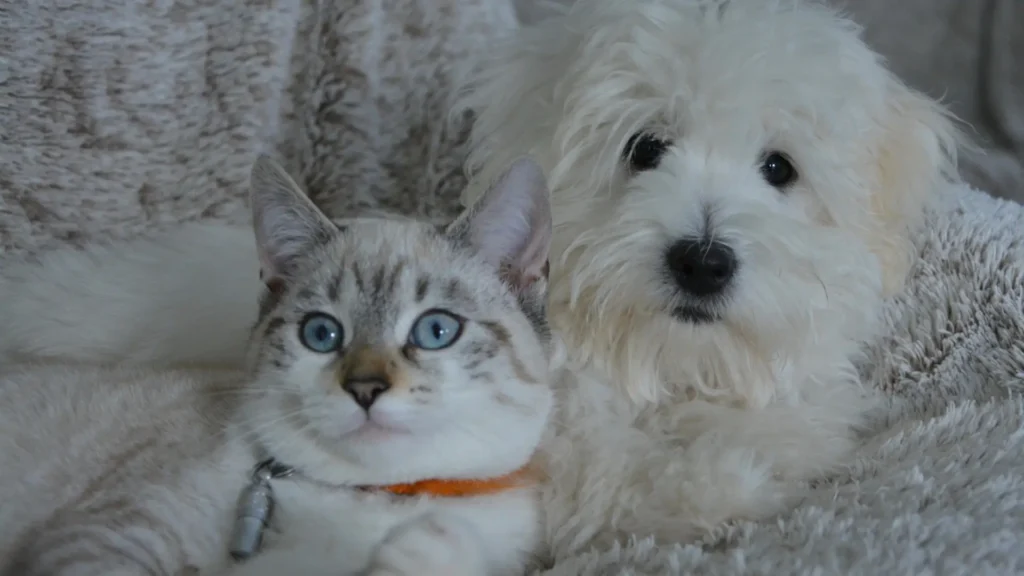
Understanding what your pets are telling you is crucial. Knowing when to intervene and when to let them be can make or break the introduction.
Positive Signs to Look For
- Ignoring Each Other: This is a fantastic sign! It shows they are comfortable and not threatened by each other’s presence.
- Slow Blinking (Cat): A slow blink from a cat is often called a “kitty kiss.” It’s a sign of trust and relaxation.
- Relaxed Body Posture: Loose bodies, relaxed tails, and soft ears on both pets are great indicators of comfort.
- Gentle Sniffing: A brief, calm sniff of each other (usually the rear end) followed by moving away is normal investigative behaviour.
Red Flags: Warning Signs to Watch Out For
If you see any of these signs, it’s time to calmly create space and end the interaction.
From the Cat:
- Hissing, spitting, or growling
- Ears flattened back against the head
- Dilated pupils
- Tail swishing back and forth rapidly or thumping on the floor
- A puffed-up tail (“bottlebrush”)
- Crouching low to the ground, ready to spring
- Swatting with a paw (even with claws sheathed, it’s a clear warning)
From the Maltese:
- Staring intently (fixating) on the cat without looking away
- A stiff, frozen body posture
- A low growl or rumbling in the chest
- Excessive, high-pitched barking at the cat
- Lunging or straining at the leash
- Chasing. Even if your Maltese’s intent is playful, chasing is terrifying for a cat and can lead to injury. This behavior must be stopped immediately, every single time.
Conclusion: A Harmonious Household is Possible
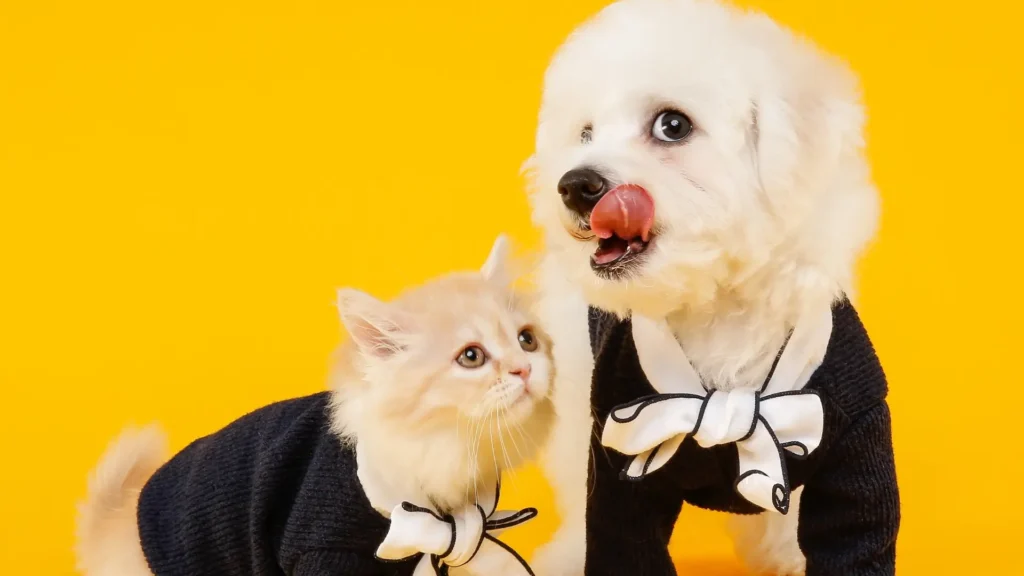
So, do Maltese get along with cats? The answer is a resounding “yes, they can!” Their gentle nature, small stature, and low prey drive make them excellent candidates for a multi-pet home. However, their breed predisposition is only half the equation. Success hinges on the individual personalities of both your dog and your cat, and most importantly, on your commitment as a responsible pet owner.
By preparing your home, managing a slow and patient introduction, and learning to read your pets’ body language, you can create a safe and positive environment for them to build a relationship. Remember that forcing them to interact or letting them “work it out” are dangerous myths. The path to friendship is paved with patience, positive reinforcement, and careful supervision. With time and effort, you may just find your Maltese and cat curled up together, proving that this wonderful companionship is not just a dream, but a beautiful reality.
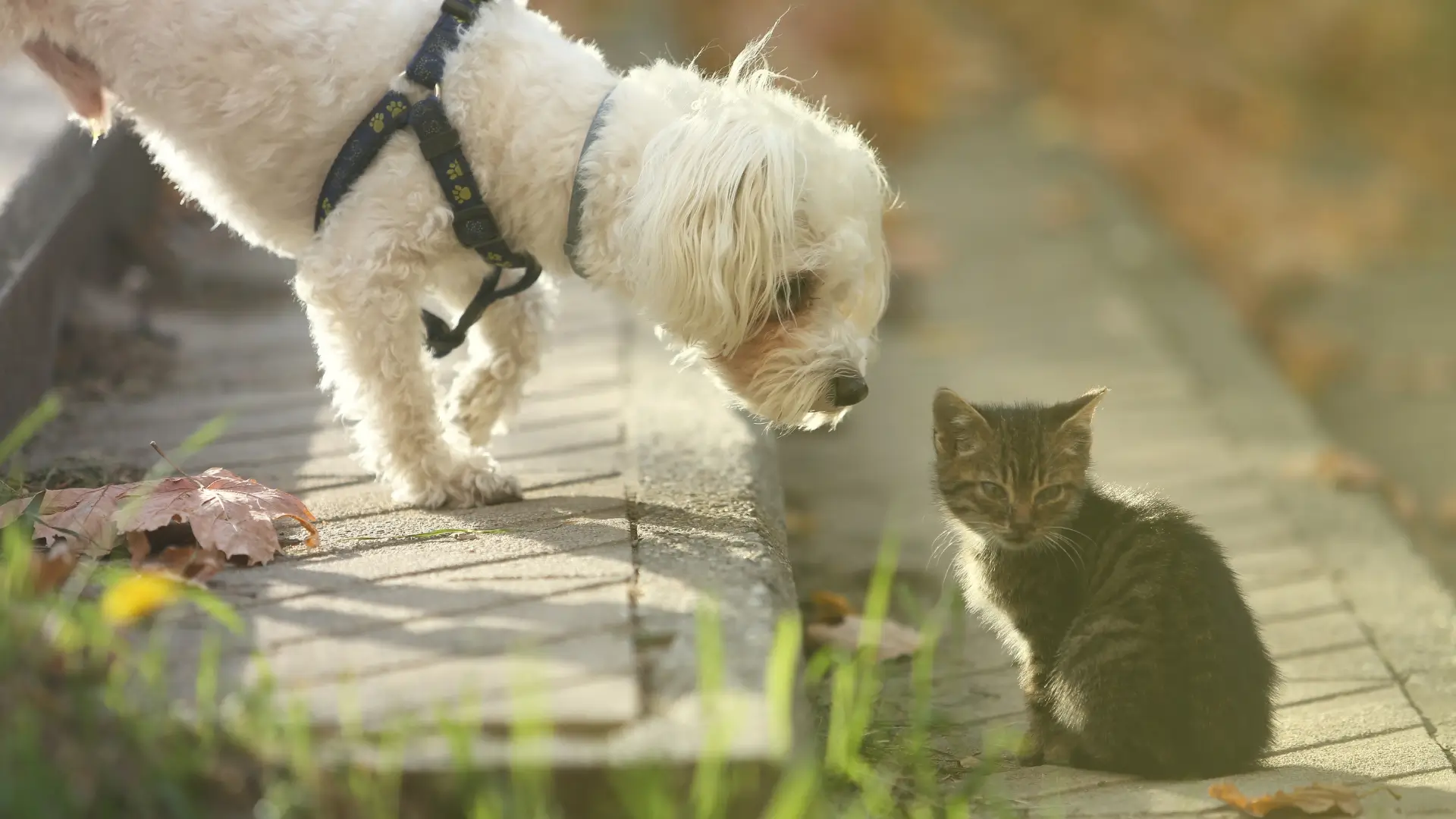
Leave a Reply